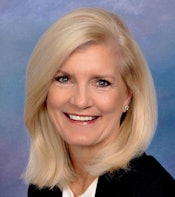
As healthcare organizations consider stratifying their imaging technology, augmenting technical skill sets required to sustain a newly adopted platform can be easily overlooked.
What is a stratified imaging platform? A stratified imaging platform is simply deconstructing a unified single-vendor platform into modular and interoperable layers of applications. This modular approach to an imaging platform, if designed correctly, provides infinite flexibility for provisioning additional software and services across image-producing systems.
Interoperability standards allow an organization to utilize multiple technical vendors and solutions for a customized approach. This provides a technological fit for demanding imaging environments without reliance on a single vendor's road map and innovation.
Logically speaking, the PACS still exists in the core of stratified environments. However, the PACS may now be comprised of several physical layers of imaging technology that expands the technical footprint of an enterprise imaging solution. Most commonly, a vendor-neutral archive (VNA), enterprise diagnostic viewer (EDV), and workflow manager (WFM) are at the core of the solution.
 Dave Whitney, chief technology officer of Medical Diagnostic Imaging Group.
Dave Whitney, chief technology officer of Medical Diagnostic Imaging Group.How does this impact technology? Each layer of a stratified environment has become increasing innovative. For instance, a true VNA has an enormous amount of flexibility, including the ability to ingest not only modality-produced DICOM images (as was the requirement for a PACS), but also non-DICOM-formatted image objects collected from new sources. These sources can be as broad as mobile devices, digital documents, motion capture, and audio files. The VNA must also be highly interoperable and provide various integration methods to image-producing devices and enterprise diagnostic viewers.
The enterprise diagnostic viewer also provides a great deal of flexibility, and capabilities continue to expand at a rapid pace. EDVs are comprised of integrated standalone software packages, pure Web browser-based applications, and hybrids of both, depending on use. In any case, a modern viewer should provide a high level of interoperability for image-enabling a VNA.
Now, an organization can provide many different viewer applications based on the specific needs of a user. Radiology can immediately take advantage of new innovations including not only standard radiology toolsets, but also enhanced specialized multimodality rendering, data-driven imagery, and advanced visualization capabilities.
Although workflow managers have been utilized for years to some extent in radiology, a robust product line is quickly emerging. RIS and electronic medical record (EMR) platforms have evolved in parallel with rudimentary teleradiology worklists into diverse platforms for consolidating and managing patient procedures across the life cycle of the patient encounter. These software applications are designed to create cost-savings and increased efficiency and quality by presenting relevant and actionable information to users within a consolidated interface.
This means that radiologists are immediately presented with relevant information for rapid diagnosis and minimal administrative tasks. Inversely, supporting staff managing cases are provided with the necessary tools to ensure that relevant information and distribution of exams happens in accordance with quality and efficiency, while ensuring issues are identified, resolved, and tracked.
How does this affect personnel and resources? Disassembling a unified imaging system to create a modular platform requires governance, a solid strategy, and diligent execution. Unlike implementing or sustaining a single-vendor solution, layering multiple vendors within a stratified platform may require many more points of integration, a broader knowledge of interoperability standards, robust vendor management, intense data aggregation, comprehensive regression testing, and augmentation of supporting staff and communication protocols.
There are several key technical roles and skill sets to appreciate within a stratified environment, as described below.
Subject matter experts
Possibly one of the most diverse skill sets required to achieve stratification, the subject matter expert (SME) must maintain in-depth knowledge of an organization's technical systems and capabilities with a deep appreciation for operational and clinical needs.
Proposing and maintaining a multivendor solution requires that a SME be abreast of current technology offerings best-suited to the organization and have a keen eye for identifying future opportunities. SMEs are critical to creating sanity in best practices for selection, implementation, utilization, and optimization. A healthcare SME's skill set should contain deep technical experience, clinical practice and process proficiency, and security and legal comprehension.
 Janet Skinner, president and CEO of Skinner and Associates.
Janet Skinner, president and CEO of Skinner and Associates.Project and portfolio managers
More technology layers, vendors, and projects require more project management resources. Managing contracts, implementation, and change control within a multivendor environment means that an organization will be managing several enterprise imaging initiatives simultaneously. Although vendors may provide a portion of professional services, an organization's project management office must bind all initiatives together into a tracked and communicated set of deliverables. Ensuring that all initiatives are timed and delivered accordingly is critical to the success of the objectives. An organization's project management team needs to be diversified in broad technical knowledge while tracking with high-level business objectives.
Integration engineers
Within a unified environment, application-level integration (e.g., RIS/PACS) is provided within a closed architecture and maintained by a single vendor. Stratifying services across multiple applications and vendors and therefore developing and sustaining a high level of interoperability requires engineering talent at many levels of integration. Although much of a single application's support and development is commonly handled by the providing vendor, the urgency and criticality of a healthcare system means an organization must be prepared to support first-level triage of system issues. Without maintaining at least a first-level engineering staff versed in multivendor technology and interoperability, an organization is constrained to service-level agreements with individual vendors, which may not satisfy the needs of an organization's users.
Informatics and data experts
A highly stratified environment introduces a multitude of data sources and flows. Creating actionable data from diverse applications and data sources requires aggregating data from multiple integration points, data repositories, and formats. The interoperability challenges seen during the wave of EMR adoption is a great example of why organizations cannot rely entirely on a single vendor's capabilities and resources to support actionable enterprise data. Without data expertise to assemble disparate data into meaningful information, an organization will be challenged to correlate data across the enterprise.
Also, without strong clinical informatics expertise to understand data flows across enterprise system processes, the organization will be challenged to provide and substantiate clinical decision-making. Both roles require a strong mix of technical and operational expertise to correlate relevant data and processes to business objectives.
Support services
At the support desk, technology is always a problem and not the solution. As technology-enabled devices expand across an organization's environment, so do the challenges for support staff. This results in more devices to support, additional applications to understand, and a myriad of interoperability challenges to troubleshoot. Organizations need to understand the additional capacity and knowledge that may be required for a stratified platform.
In conclusion, creating a stratified imaging platform will provide a flexible and cost-effective solution for an organization. However, the sustainability and success of a stratified environment depends on the people who support it. By analyzing resource requirements, identifying skill-set gaps, and understanding options for placement, an organization can realign its people with the processes and technology.
In our next column, we will discuss how an organization can address resource challenges.
Dave Whitney is a former candidate and client of Skinner and Associates. He is the chief technology officer at Medical Diagnostic Imaging Group, based in Phoenix, and a frequent contributor on the subject of health information technology.
Reprinted with permission of Skinner and Associates, a full-service recruiting and consulting firm specializing in healthcare IT and informatics and imaging. This includes EMR, electronic health records, health information exchanges, VNA, PACS, clinical interoperability, GRC, and cloud technologies. It provides direct-hire and contract solutions to client employers and candidates nationwide and has been in business for more than 15 years. The firm can be contacted at www.SkinnerandAssociates.com or www.skinnerjobs.com.
The comments and observations expressed herein are those of the author and do not necessarily reflect the opinions of AuntMinnie.com.



















